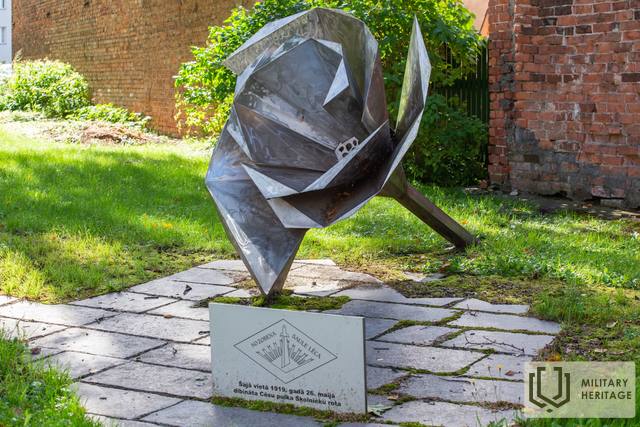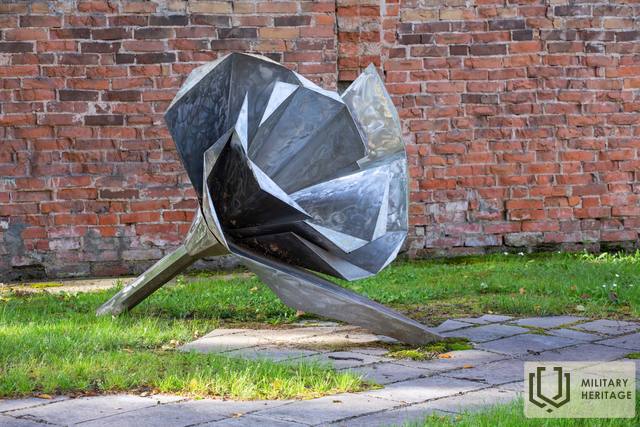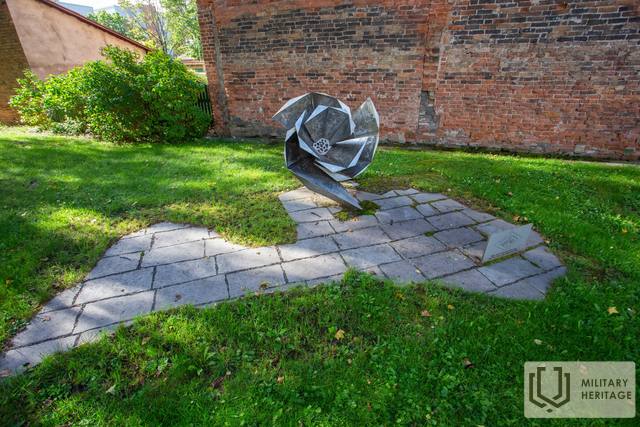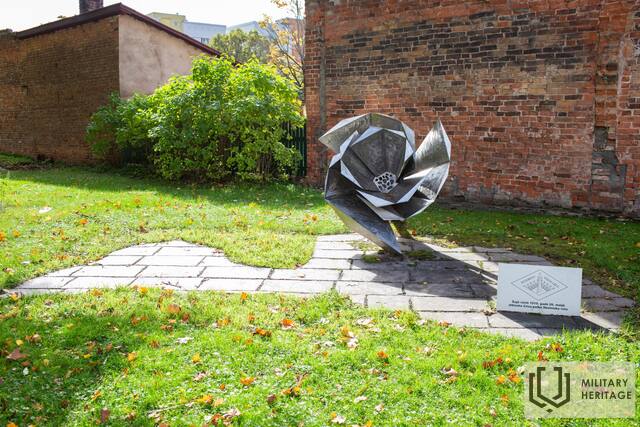Atminimo ženklas Cėsių pulko studentų kuopos įkūrimo vietoje
Memorialinė vieta
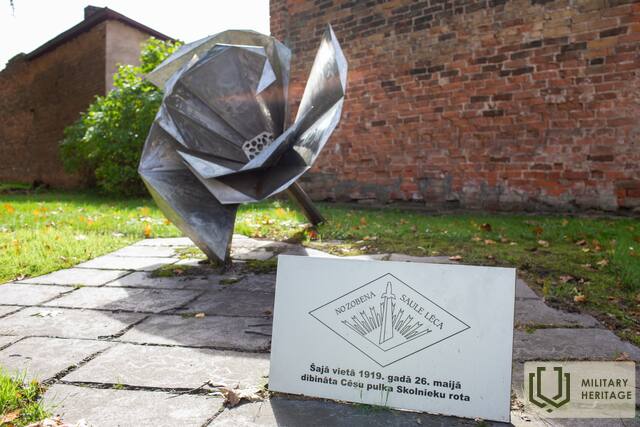

 108
108



Įsikūręs Leona Paegles gatvėje 1, šalia raudonų plytų pastato fasado.
Memorialo autorė – menininkė Solveiga Vasiljeva, o idėja paremta žiedpumpurio motyvu. Kaip pastebi menininkė, jis simbolizuoja tik pradedančias formuotis asmenybes – studentus, kurie savo dar trumpame gyvenime turi priimti svarbų, atsakingą ir sunkų sprendimą.
Memorialo formoje žiedpumpuro išoriniai žiedlapiai yra geometrinio dizaino, su aštriais kampais, kontrastuojančiais su minkštais, apvaliais žiedlapiais pumpuro viduje. Memorialo aukštis siekia iki 1,5 m. Memorialas buvo atidengtas 2011 m. gegužės 26 d. Valmieroje, toje vietoje, kur 1919 m. buvo suformuota Cėsių pulko kadetų kuopa.
Latvijos kontūrai išdėlioti iš dirbtinių grindinio akmenų, ant kurių paguldyta lentelė su Cėsių pulko Mokinių kuopos vėliava ir tekstu:
„Šioje vietoje 1919 m. gegužės 26 d.
Įkurta „Cėsių pulko mokyklos kuopa“
Panaudoti šaltiniai ir literatūra:
https://www.eliesma.lv/maija-beigas-valmiera-atklas-pieminas-zimi-cesu-pulka-skolnieku-rotai
https://karavirukapi.blogspot.com/2020/05/valmiera-pieminas-zime-cesu-pulka.html
Susijusi laiko juosta
Susijusi istorija
Neįprasta Cėsių pulko mokyklos kuopos paminklo istorija
1919 m. Cėsių mūšiuose dalyvavo Cėsių pulko savanorių moksleivių kuopa, kuri birželio 5 d. buvusios Cėsių vokiečių progimnazijos patalpose Dārza gatvėje (dabar Bērzaines gatvė 4) susiformavo kaip kovinis vienetas iš 108 jaunuolių iš Valmieros ir Cėsių mokyklų. Jau naktį iš birželio 5 į 6 d., maždaug po valandos vidurnakčio, buvo paskelbtas aliarmas ir kuopai buvo įsakyta užimti pozicijas. Kuopa išėjo į Mācītājmuižos – Meijermuižos liniją, kuri buvo laikoma svarbiausia mūšio vieta.
Cėsių pulko studentų būriui skirtas paminklas prie buvusių Livu parapijos salės
1919 m. Cėsių mūšiuose dalyvavo Cėsių pulko savanorių moksleivių kuopa, kuri birželio 5 d. Cėsių progimnazijos patalpose susiformavo kaip kovinis vienetas iš 108 Valmieros ir Cėsių mokyklų jaunuolių. Jau naktį iš birželio 5 į 6 d., maždaug po valandos vidurnakčio, buvo paskelbtas aliarmas ir kuopai buvo įsakyta persikelti į pozicijas. Kuopa persikėlė į Mācītājmuižos - Meijermuižos liniją, kuri buvo laikoma svarbiausia mūšio vieta.
Pirmajame mūšyje buvo sužeisti keli moksleiviai, tačiau tą pačią dieną nuo labai sunkios pilvo žaizdos mirė Edgaras Krieviņšas, kilęs iš Valmieros. Jis buvo palaidotas su karine pagarba Valmieros miesto kapinėse birželio 13 d. Edgarui Krieviņam po mirties buvo įteiktas Lačplėšio karo ordinas.
Cėsių mūšio pradžia, eiga ir pabaiga
Pergalė Cėsių mūšyje turėjo tapti lūžio tašku Latvijos ir Estijos kovoje už savo šalies nepriklausomybę. Ši pergalė sustabdė Andrijevo Niedros vyriausybės ir vokiečių generolo Rüdigerio fon der Golco planus užkariauti Pabaltijį. Vietoj to, Liepojoje savo veiklą atnaujino Karlio Ulmanio vadovaujama Laikinoji Latvijos vyriausybė.




